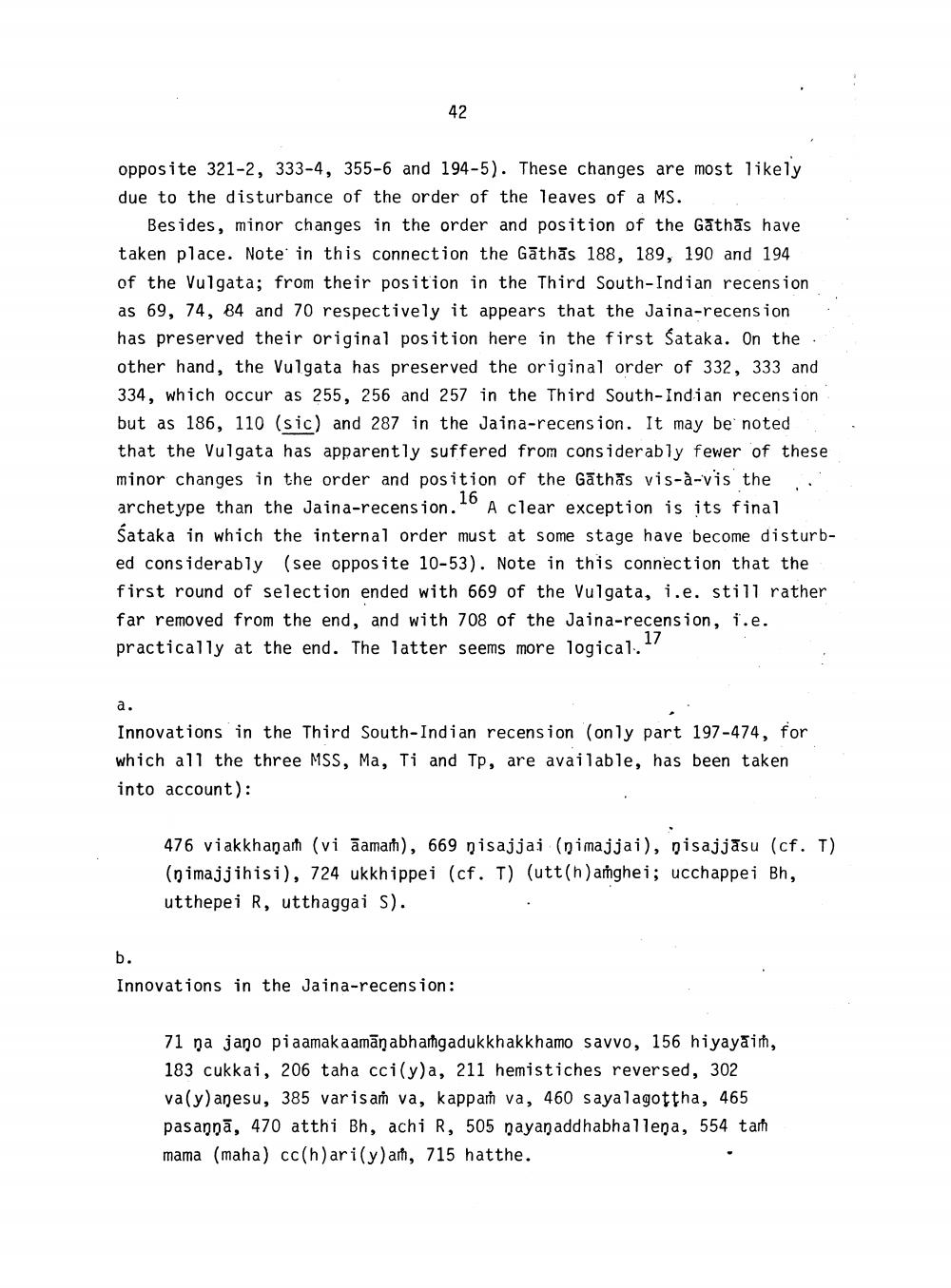________________
opposite 321-2, 333-4, 355-6 and 194-5). These changes are most likely due to the disturbance of the order of the leaves of a MS.
Besides, minor changes in the order and position of the Gathās have taken place. Note in this connection the Gathās 188, 189, 190 and 194 of the Vulgata; from their position in the Third South Indian recension as 69, 74, 84 and 70 respectively it appears that the Jaina-recension has preserved their original position here in the first Śataka. On the other hand, the Vulgata has preserved the original order of 332, 333 and 334, which occur as 255, 256 and 257 in the Third South-Indian recension but as 186, 110 (sic) and 287 in the Jaina-recension. It may be noted that the Vulgata has apparently suffered from considerably fewer of these minor changes in the order and position of the Gathās vis-à-vis the archetype than the Jaina-recension. A clear exception is its final Śataka in which the internal order must at some stage have become disturbed considerably (see opposite 10-53). Note in this connection that the first round of selection ended with 669 of the Vulgata, i.e. still rather far removed from the end, and with 708 of the Jaina-recension, i.e. practically at the end. The latter seems more logical."
a.
Innovations in the Third South-Indian recension (only part 197-474, for which all the three MSS, Ma, Ti and Tp, are available, has been taken into account):
476 viakkhanah (vi āamaih), 669 nisajjai (nimajjai), nisajjāsu (cf. T) (pimajjihisi), 724 ukkhippei (cf. T) (utt(n) amghei; ucchappei Bh, utthepei R, utthaggai s).
Innovations in the Jaina-recension:
71 na jano piaamakaamāṇabhamgadukkhakkhamo savvo, 156 hiyayāim, 183 cukkai, 206 taha cci(y)a, 211 hemistiches reversed, 302 va(y) anesu, 385 varis aṁ va, kappam va, 460 sayalagottha, 465 pasannā, 470 atthi Bh, achi R, 505 nayan addhabhallena, 554 tam mama (maha) cc(h)ari(y) an, 715 hatthe.




